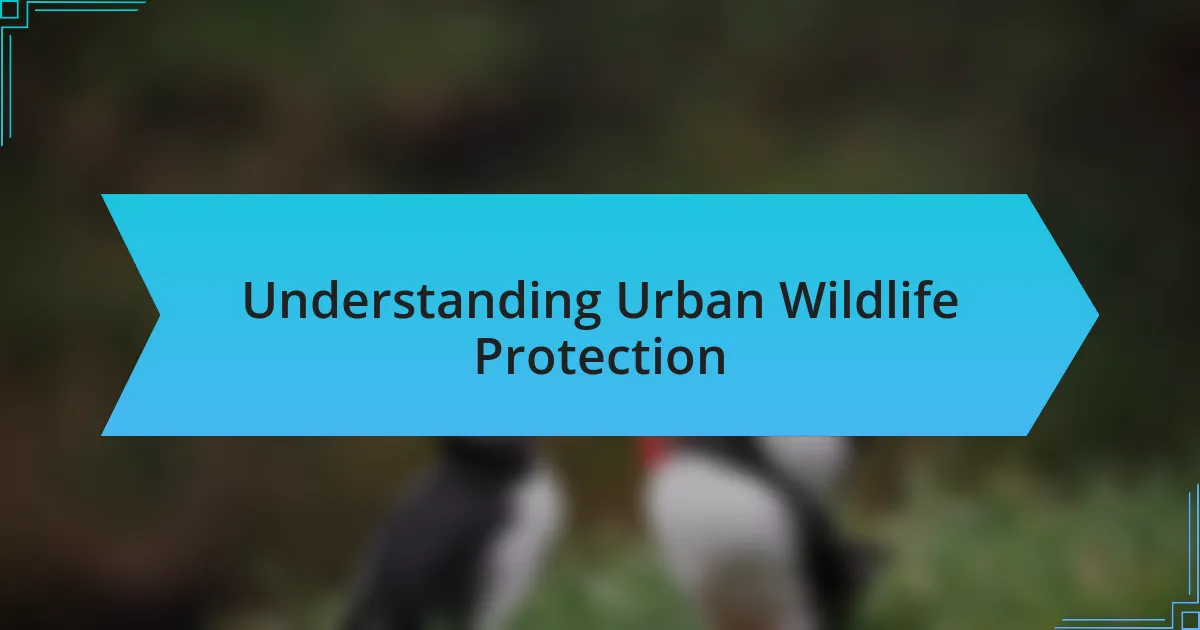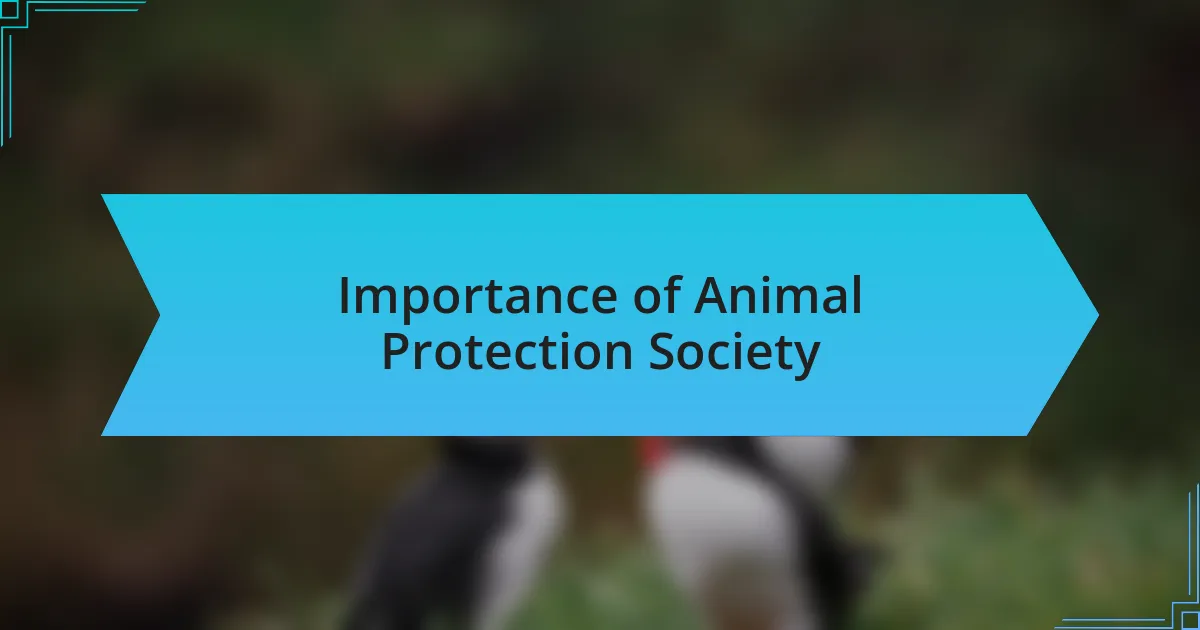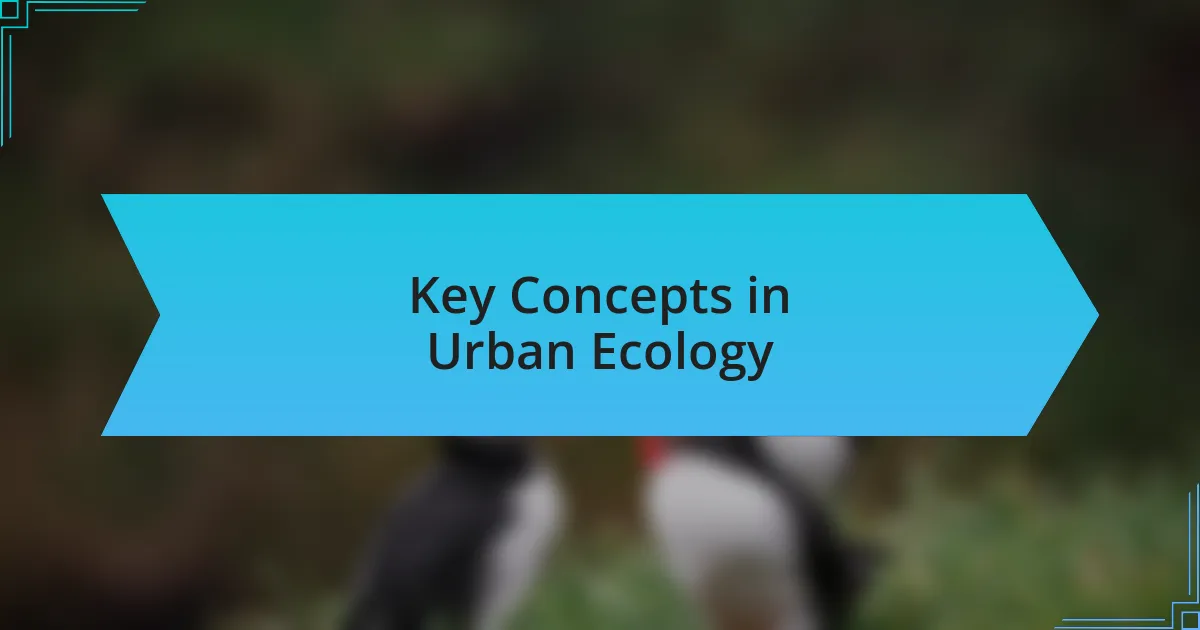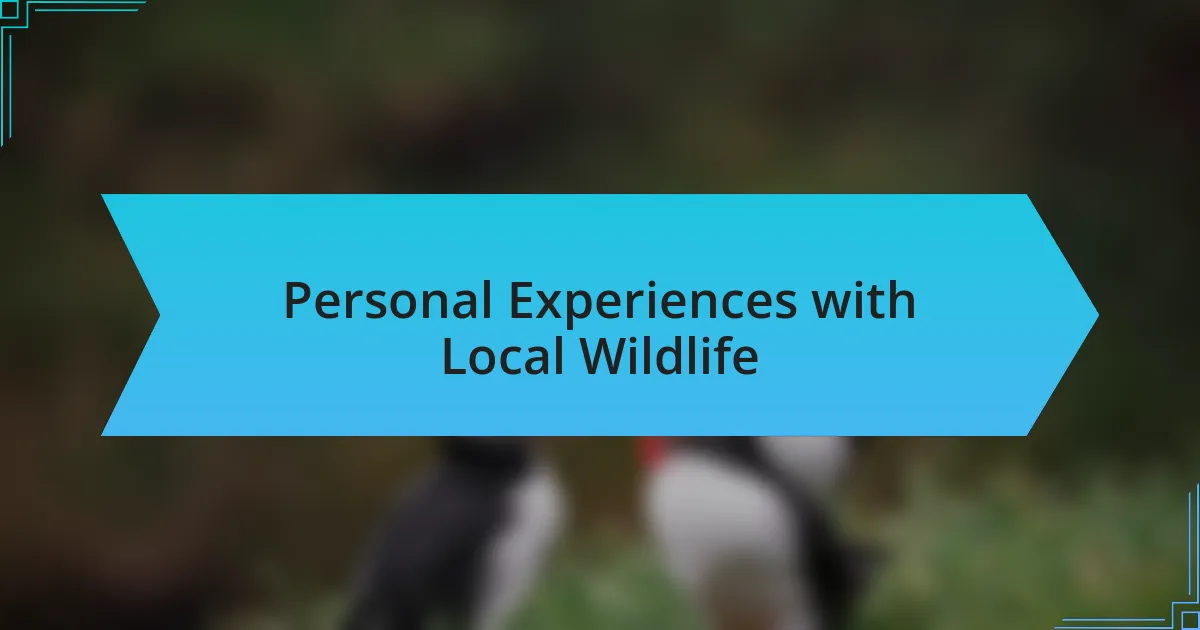Key takeaways:
- Urban wildlife protection is essential for maintaining biodiversity amidst human development and requires small changes, such as planting native plants in gardens.
- Animal Protection Societies play a critical role in advocating for wildlife, influencing policy changes, and fostering community appreciation for urban wildlife.
- Challenges like habitat loss, pollution, and human-wildlife conflict threaten urban wildlife, necessitating a shift in how we interact with these species.
- Personal encounters with wildlife, such as observing hawks and coyotes, highlight the importance of understanding and respecting wildlife in urban areas.

Understanding Urban Wildlife Protection
Urban wildlife protection is crucial for maintaining biodiversity in our cities, where natural habitats often clash with human development. I still remember the first time I spotted a red-tailed hawk soaring above a bustling street; it struck me how these magnificent creatures adapt to urban settings. How can we coexist with wildlife in our concrete jungles, you might wonder?
Throughout my urban wildlife class, I learned that small changes can have significant impacts. For instance, planting native plants in gardens not only attracts local pollinators but also provides food and shelter for birds and insects. Each time I see a butterfly flit through a blooming garden, I feel a sense of connection to the ecosystem, reminding me of the essential role we all play in protecting these delicate species.
It’s eye-opening to think about how noise pollution and light from our city lives can disrupt wildlife behavior. I often reflect on times I’ve walked through a park at night, only to find the streets buzzing with cars and bright lights, oblivious to the nocturnal creatures trying to thrive in the shadows. Understanding urban wildlife protection means recognizing that our environment is not just ours; it belongs to all layers of life, urging us to be thoughtful stewards together.

Importance of Animal Protection Society
Animal Protection Societies play a vital role in bridging the gap between humans and the wildlife that shares our urban spaces. As I volunteered at a local shelter, I witnessed firsthand the joy of nursing injured birds back to health. It was not just about saving individual animals; it was about fostering appreciation for all creatures, reminding us that their existence enriches our lives.
Moreover, these organizations advocate for much-needed policy changes that protect wildlife habitats. I recall attending a community meeting where passionate advocates shared their experiences of how urban planning can prioritize green spaces. It struck me then that when we push for more equitable policy, we are not simply fighting for animals but for the overall health of our urban ecosystems. What would our cities look like if every voice mattered in this dialogue?
Lastly, the educational outreach offered by Animal Protection Societies cannot be understated. I remember participating in a workshop where we explored the behaviors of urban raccoons and their adaptability. Understanding these animals on a deeper level opened my eyes to the complexities of coexistence. Isn’t it fascinating how knowledge can transform fear into respect for our diverse urban wildlife?

Key Concepts in Urban Ecology
Urban ecology is fascinating because it reveals the intricate ways wildlife interacts with our city landscapes. For instance, during my time in the urban wildlife class, I discovered how species like peregrine falcons have adapted to nesting on skyscrapers. Witnessing this adaptability made me reflect on the resilience of wildlife and raised a question: How can we, as city dwellers, better appreciate these remarkable survival stories?
Another key concept is the importance of green spaces. While studying urban parks, I was struck by how even a small patch of greenery can serve as a vital habitat for birds and insects. I recall observing a butterfly flit from flower to flower in a tiny community garden. It dawned on me that these seemingly minor spaces play an essential role in supporting biodiversity. Isn’t it remarkable how a bit of nature in our urban environment can create so much life around us?
Finally, the concept of community engagement stands out in urban ecology. In one session, we discussed how local residents can influence urban planning for the better. I remember a classmate sharing her experience of rallying her neighborhood to plant native species in their yards, which not only beautified their environment but also attracted essential pollinators. This made me wonder: What if more communities took proactive steps to weave nature back into our urban fabric?

Challenges Facing Urban Wildlife
Urban wildlife faces daunting challenges that stem from habitat loss and fragmentation. During my wildlife class, I learned that urban development often destroys natural habitats, forcing animals to adapt in ways that can be harmful. I remember feeling a pang of sadness when a guest speaker shared stories of local species struggling to find food and shelter due to encroaching concrete.
Pollution is another significant hurdle for wildlife in urban settings. I recall a field trip to a riverbank, where the instructor explained how toxins from runoff can devastate aquatic life. Standing there, I couldn’t help but ponder how our everyday actions impact the creatures that share our environment. Are we doing enough to protect these vulnerable populations when our lifestyles lead to such detrimental effects?
Additionally, wildlife frequently faces the threat of human-wildlife conflict as animals venture into cities searching for food. I remember visiting a local community where residents were dealing with raccoons raiding trash bins. Rather than seeing these animals as nuisances, I wondered how we could foster coexistence. Can we find ways to adjust our practices and create safe spaces for these creatures? The answer lies in our willingness to learn and adapt, just like the wildlife we strive to protect.

Personal Experiences with Local Wildlife
I have had some memorable encounters with local wildlife that have shaped my perspective significantly. One morning, while walking through a park near my home, I stumbled upon a family of ducks waddling toward a pond. Their innocent quacking and playful splashing reminded me just how essential these small ecosystems are to our urban environment. I couldn’t help but smile, thinking about how such moments bring a sense of joy and connection to nature amidst our busy lives.
During another class, I shared an experience of observing a red-tailed hawk perched majestically on a streetlight. It was thrilling to see such a powerful bird adapt to urban life. I felt an overwhelming sense of admiration as we discussed these adaptations. How does one become so graceful and resilient amid chaos? Witnessing the hawk’s effortless glide through the skyline was a potent reminder of the strength of wildlife, even in our concrete jungles.
I think back to a hot summer evening when I heard the unmistakable call of a coyote in my neighborhood. At first, I felt a chill run down my spine, but later I found myself contemplating the coyote’s journey through searching for food in a habitat that has been fragmented by development. Was it fear that drove my initial reaction, or was it a lack of understanding? This encounter ignited a desire in me to learn more about these fascinating creatures and how we can coexist peacefully.